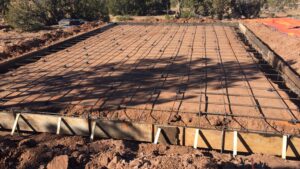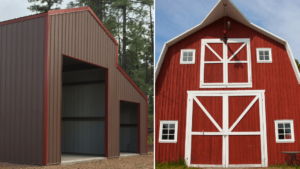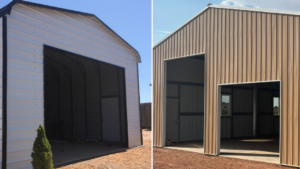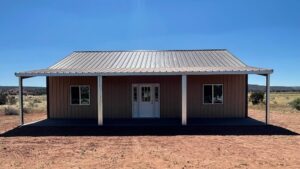When it comes to choosing a metal building for your project, whether you’re a new home builder or an investor, there are two main types to consider: cold-formed vs red iron rigid-frame metal buildings. Both options are very similar and offer durability and flexibility, but they serve different purposes and perform better in specific scenarios. Understanding the strengths and weaknesses of each can help you make an informed decision.
What Are Cold-Formed Metal Buildings?
Cold-formed metal buildings, as the name suggests, are made from steel that is shaped at room temperature. The steel is typically roll-formed into thin, lightweight sections, which makes it more flexible and easier to handle. These buildings are commonly used for smaller structures, such as garages, workshops, or storage units.
Advantages of Cold-Formed Metal Buildings
Cost-Effectiveness
One of the biggest selling points of cold-formed metal buildings is their affordability. Since the steel used is thinner and the overall structure is lighter, the cost of materials is typically lower. Plus, these buildings are often easier to transport, which can save you money on shipping fees. We’ve worked with several clients who opted for cold-formed buildings when they had tighter budgets, and the cost savings really made a difference. With all delays with steel shortages for regular rigid buildings cold-formed have been the alternative solution with less lead time.
Lower Foundation Costs
Biggest benefit of cold-formed vs red iron is lower foundation costs since it does not require as much rebar to support the weight of the building. Making this is the best cost effective solution in this inflation rising economy.
Flexibility for Small-Scale Projects
Cold-formed buildings are ideal for smaller projects, like garages, carports, or backyard workshops. Their lighter construction doesn’t require the same heavy-duty foundations that rigid-frame buildings do, so lower foundation costs, making them a quicker, simpler option for smaller structures.
Disadvantages of Cold-Formed Metal Buildings
Limited Strength
While cold-formed buildings are great for smaller projects, their lightweight construction comes with limits. They simply don’t have the strength to support large spans or heavy loads. This makes them less suitable for larger buildings or projects that need to handle heavy snow loads or high winds.
We once had a client who initially opted for a cold-formed metal building for their workshop, thinking it would be sufficient. However, after considering their plans to install heavy equipment and tools, we advised them to reconsider. In the end, they upgraded to a rigid-frame structure that could better handle the weight and offer the durability they needed.
Less Weather Resistance
Cold-formed buildings are also more vulnerable to extreme weather conditions. While they hold up well in milder climates, they can struggle in areas with heavy snow or high winds. If you’re building in an area prone to harsh weather, it’s worth considering a more robust option.
What Are Red Iron Metal Buildings?
Red Iron Rigid-frame metal buildings, on the other hand, are built using thicker, stronger steel sections that are welded or bolted together. These buildings are designed to support larger structures and withstand much heavier loads. They’re often used for industrial buildings, commercial spaces, or large-scale residential projects.
Advantages of Rigid-Frame Metal Buildings
Superior Strength and Durability
Rigid-frame buildings are built to last. Their heavy-duty construction can support large open spans, making them ideal for large warehouses, barns, or even commercial spaces. We had a client who needed a large workshop for their business, and a cold-formed building simply wasn’t going to cut it. After switching to a rigid-frame structure, they were able to build a space that could handle their large equipment and withstand the area’s high winds.
Weather Resistance
These buildings are designed to handle the toughest weather conditions. Whether you’re in an area with heavy snow, strong winds, or even seismic activity, rigid-frame metal buildings offer superior protection. We’ve seen firsthand how well rigid-frame buildings hold up in extreme conditions. One of our clients built a large warehouse in a high-wind zone, and years later, the structure still stands strong, requiring minimal maintenance.
Longevity and Low Maintenance
Another advantage is that rigid-frame buildings are incredibly low maintenance. Because they’re made from thicker steel, they’re less likely to suffer from issues like rust, warping, or structural wear. This means fewer repairs and longer lifespans compared to cold-formed buildings, which is a big win in terms of long-term investment.
Disadvantages of Rigid-Frame Metal Buildings
Higher Upfront Costs
The biggest downside to rigid-frame metal buildings is the cost. Because the materials are heavier and the construction more complex, these buildings come with a higher price tag. However, it’s important to remember that this is an investment. While rigid-frame buildings may cost more upfront, their durability and low maintenance often mean they save you money over time.
More Complex Assembly
Red iron buildings are heavier and typically require professional installation. The beams are larger and more difficult to handle, so if you’re planning a DIY project, this might not be the best option. However, if you’re building something large or long-term, it’s worth investing in professional help to ensure the structure is sound and built to last.
Side by Side Comparison with Key Differences

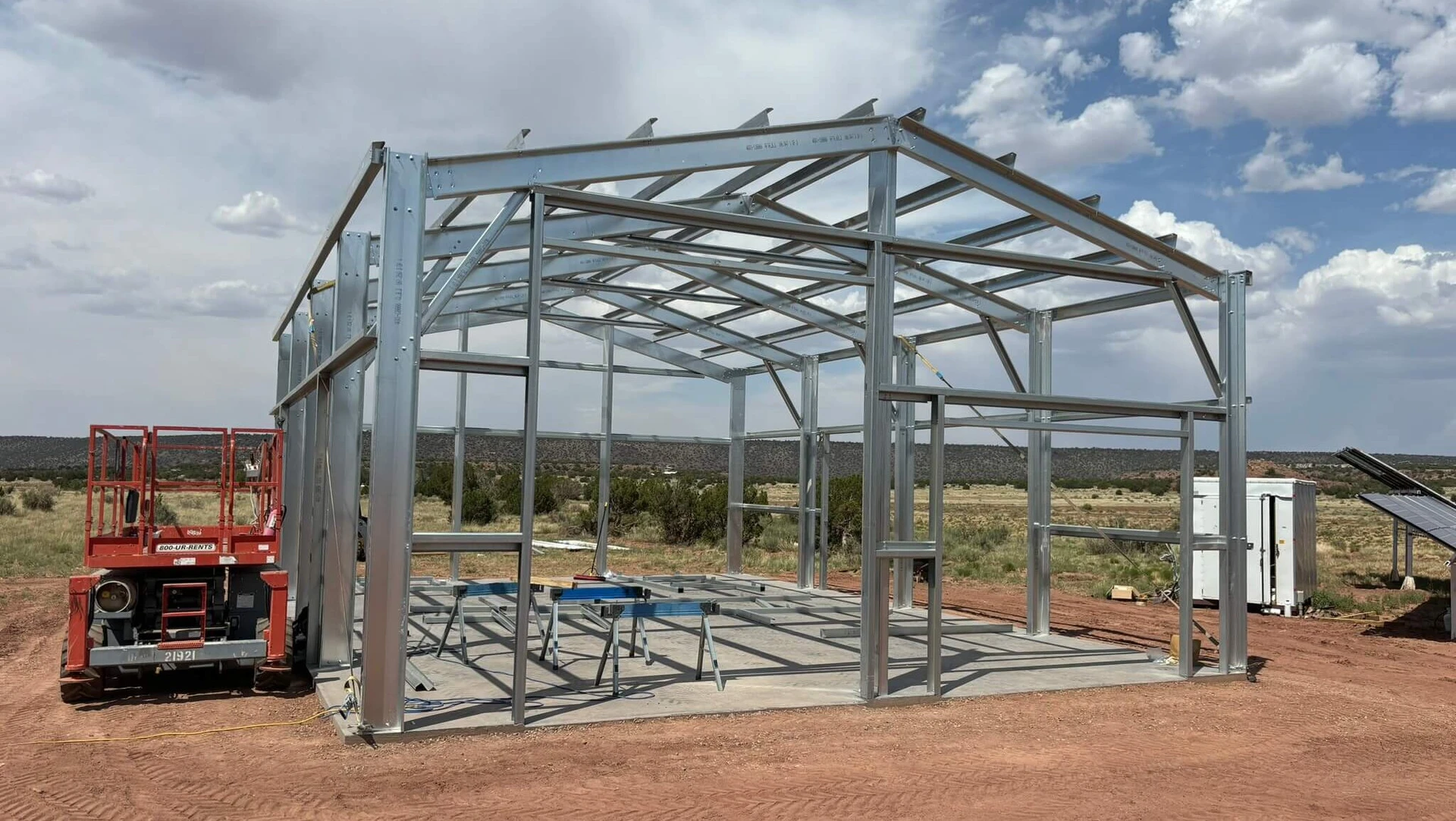 | 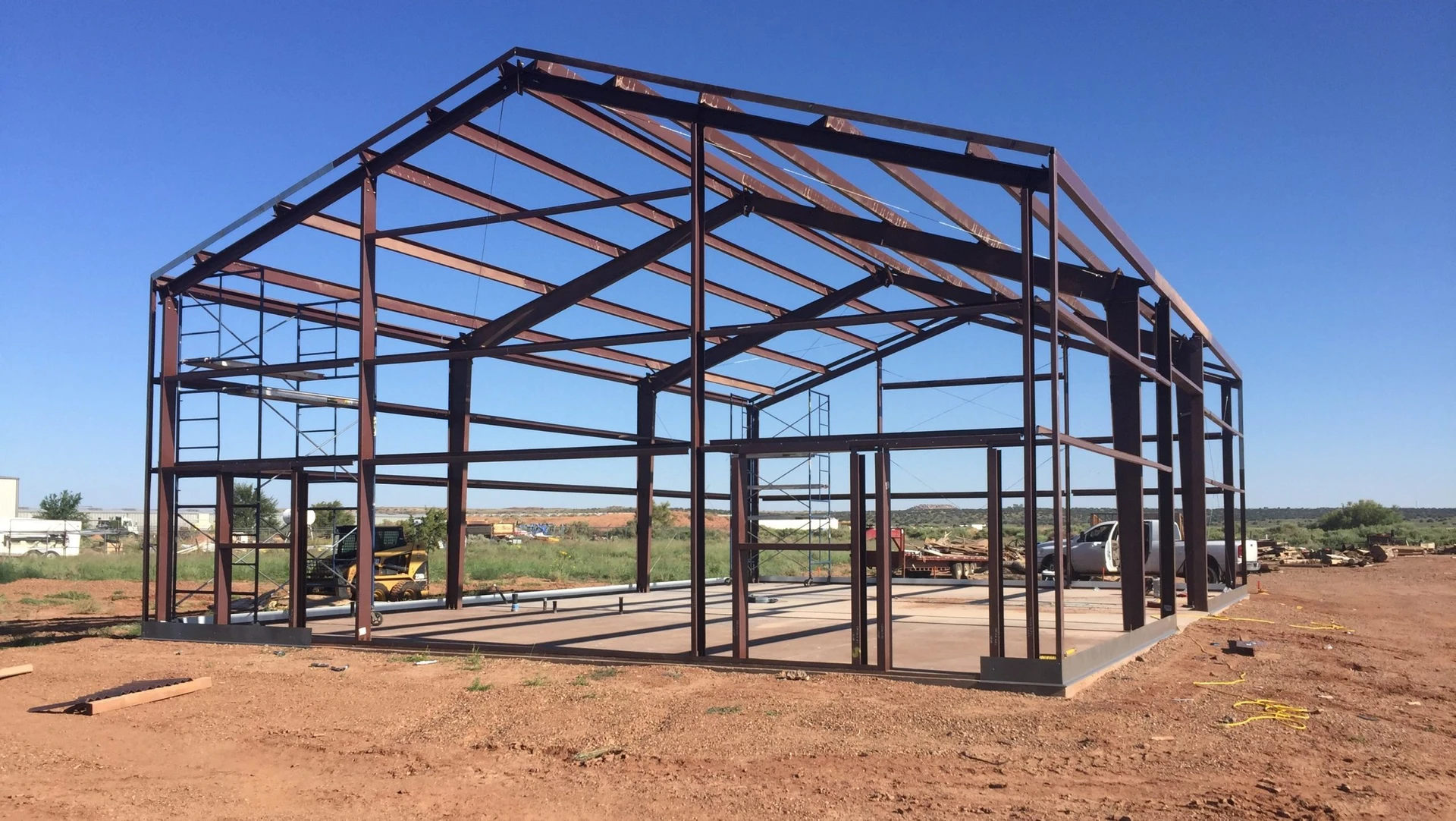 |
Key Differences: Cold-Formed vs. Red Iron Metal Buildings
Structural Differences
Cold-formed metal buildings are constructed from lightweight, roll-formed steel, while rigid-frame buildings use thicker, welded or bolted sections of steel. The difference in construction directly impacts the strength and flexibility of the structure. Cold-formed buildings are ideal for smaller, less complex projects, while rigid-frame buildings are designed for large, heavy-duty applications.
Applications and Suitability
For new home builders and investors, it’s important to consider the scope of your project when deciding between the two. Cold-formed buildings are a great choice for small garages, workshops, or storage units, especially if you’re on a budget. Red iron rigid-frame buildings, however, are better suited for larger structures like industrial warehouses, large workshops, or even commercial buildings.
Cost and Investment
Cold-formed buildings are the more affordable option upfront, but red iron rigid-frame buildings offer better long-term value. While the initial cost is higher, red iron rigid-frame structures require less maintenance and are more durable, which can save you money over time.
Weather Resistance and Load-Bearing Capacity
If your project is located in an area with harsh weather conditions, rigid-frame buildings are the better choice. Their ability to handle heavy loads and resist strong winds or snow makes them a more reliable option for extreme climates. Cold-formed buildings are best suited for areas with mild weather.
Making the Right Choice for Your Project
So, which one is right for you? Here are some questions to help guide your decision:
- What is the size and scope of your project?
- Will the building need to withstand heavy weather or support large equipment?
- Are you looking for a long term project, or are you comfortable hiring professionals for installation?
- What’s your long-term budget for maintenance and repairs?
If you’re building something small, simple, and cost-effective, a cold-formed metal building could be the perfect fit. But if you need a structure that’s going to stand the test of time and handle tougher conditions, a rigid-frame metal building is the way to go.
Conclusion
Choosing between cold-formed vs red iron rigid-frame metal buildings ultimately comes down to your project’s specific needs. As experienced metal building dealers and contractors, we’ve seen firsthand how both options can shine in different situations. Cold-formed buildings are great for smaller, budget-friendly projects, while rigid-frame buildings offer superior strength and durability for larger, more demanding structures.
If you’re still unsure which option is right for your project, feel free to reach out. We’d be happy to help you navigate the decision and find the perfect solution for your needs.

